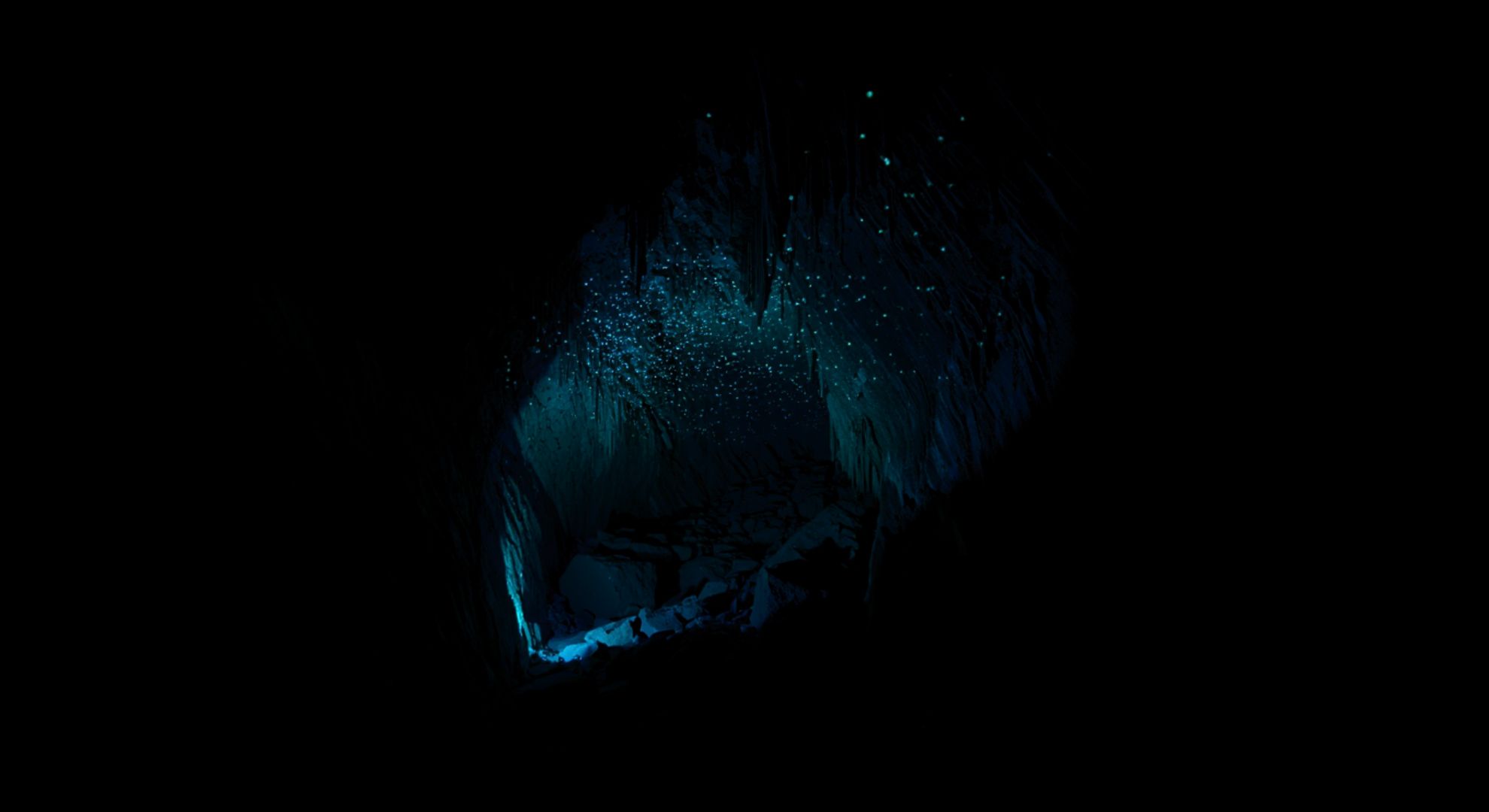At the edge of a rushing river, beneath ferns and ponga, there’s a pocket of darkness that flickers with blue stars. Locals whisper about a short path, a bend in the bush, and a small cave where living lanterns switch on after sunset. It isn’t a show cave; it’s a quiet corner that rewards patience and care.
Where the light lives
These tiny lights are glowworms, the bioluminescent larvae of a fungus gnat. They hang delicate threads like silk, luring midges the way fishermen tempt trout. In the cave’s damp ceiling they sparkle like a low Milky Way, a universe framed by rock and dripping moss.
"If you let your eyes adjust, the whole roof slowly breathes with light," said a local guide who paddles the Kaituna’s twilight currents.
The place most visitors miss
Just north of Rotorua, the Okere Falls Scenic Reserve hides a small chamber known as Tutea Caves. By day it’s modest; by night it glows. Many travelers speed past on SH33, chasing geysers and spas, never noticing the side track that slips into shade and silence.
"It’s not a secret, but it’s quiet because it asks for time, darkness, and gentleness," a kaitiaki told me with a smile.
How to reach it (without ruining it)
Bring calm feet and leave bright beams at home. Red light preserves night vision and reduces stress for these creatures.
- Park at the Okere Falls Scenic Reserve on SH33; follow the Okere Falls Track past the river lookouts; after Tutea Falls viewpoint, continue to the signed Tutea Cave spur; enter slowly, keep voices low, switch to red light, then turn lights fully off and wait 3–5 minutes for the ceiling to ignite.
When the cave is best
On clear, moonless nights, the glow feels extra dense. After rain, the air turns cool, and the threads bead with silver droplets. In summer, evenings arrive late; in winter, the darkness comes early, and you may have the entire track to yourself.
Go late enough that rafters have drifted home, but not so late you risk fatigue on the return. Remember: darkness makes roots slick, so tread with care.
What to bring
Pack small, think quiet, and choose low-impact gear. A little preparation keeps the experience wild and the cave healthy.
- Soft-soled shoes with good grip; a headlamp with a red mode; a thin rain layer; insect repellent used away from the cave; and water in a reusable bottle.
How to look without harming
Respect is the price of admission, paid in silence and restraint. Keep to the formed track, step gently inside the entrance, and resist touching ceiling or walls. Light equals stress; sound equals stress. The less you bring, the more the cave offers.
Never use smoke, sprays, or food inside; they weaken the delicate ecosystem. Stay a few minutes, let awe do its work, then give the place back to the night.
Photographing the unhurried
The best photos are slow, small, and still. Use a tripod, shoot long exposures, and avoid white light. Try ISO 800–1600, f/2–f/4, and 10–20 seconds, then refine with gentle bracketing. Turn screens dim, whisper counts, and pause between frames so the cave can settle again.
Alternatives compared
Sometimes the famous route fits your schedule, and sometimes a quieter path calls. Here’s a simple snapshot of options near and beyond Rotorua:
| Spot | Distance from Rotorua | Crowd Level | Access Cost | Best Time | Notes |
|---|---|---|---|---|---|
| Tutea Caves (Okere Falls) | ~20 min by car | Low to moderate | Free | After dark | Small chamber, wild feel, bring respect |
| Waitomo Glowworm Cave | ~2 hr 15 min drive | High | Ticketed | Evening tours | Boat tour, spectacular but managed |
| Ruakuri Walk (Waitomo) | ~2 hr 20 min drive | Moderate | Free | Night walks | Forest track with glowworms along banks |
| Waipu Caves | ~3 hr 30 min drive | Low to moderate | Free | Dry nights | Larger limestone cave, slippery floor |
Each place holds the same species, yet each offers a different rhythm. The smaller the site, the greater your responsibility.
A note on guardianship
This landscape isn’t just scenery; it’s whakapapa, woven with stories and stewardship. Move with gratitude, leave no trace, and treat the darkness as a living home. The glowworms are tiny, but their light travels far, stitching river, forest, and sky into a single soft constellation.
If you stand quietly long enough, you’ll hear the river’s pulse answering the roof’s slow sparkle. That’s your cue to listen, to soften, and to let the night keep a little of its mystery.
